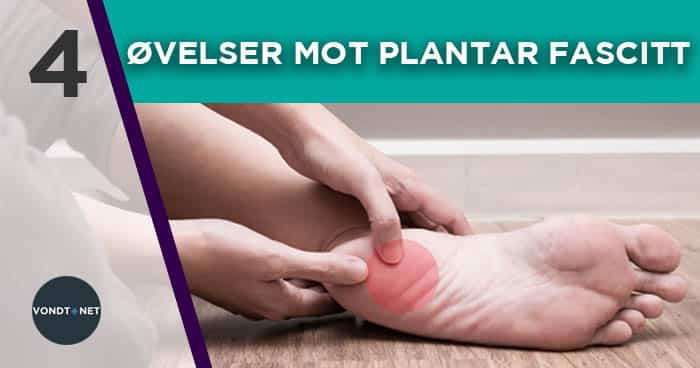6 Exercises against Plantar Fascitt
Last updated 25/03/2021 by The pain clinics - Interdisciplinary Health
6 Exercises against Plantar Fascitt
Are you affected by plantar fascitis under foot? Here are 6 exercises that can provide both functional improvement and pain relief. Start today!
We have also attached a video showing how several of them are performed.
What is plantar fascite?
Plantar fascia is an overload of the tendon plate under the foot - better known as the plantar fascia. Overload can cause damage and inflammation in the tendon tissue that provides the basis for pain in the front of the heel. It often hurts the most in the morning when you take your first steps. It is important to note that parts of the inflammatory reactions that normally form are the body's own healing response - and that several studies have shown that NSAIDS drugs can lead to significantly slower healing.
Many will get better over time, but without treatment it can actually take as long as 1-2 years. This is because the body has difficulty breaking down the damaged tissue and replacing it with normal tissue. Fortunately, there are well-documented treatments such as Shockwave Therapy og laser treatment. Other treatment methods include the use of compression socks, shoes with better cushioning, insoles and exercises. You can get better acquainted with the latter in this article - and in the video below.
VIDEO - 6 Exercises against Plantar Fascitis:
Feel free to subscribe our YouTube channel for free health updates and exercise programs.
1. Plantar fasciae clothing exercise

A research group (1) designed a stretching program for the tendon plate under the foot (plantar fascia). The stretching exercise, as shown in the picture above, consisted of laying the affected leg over the other - and then stretching the underside of the foot by pulling the front part of the football backwards. This should be felt in the underside of the sole of the foot and against the heel.
In the study, the patient was told to stretch for 10 seconds over 10 sets - up to 3 times a day. So 30 sets in total. An alternative is also to stretch for 30 seconds over 3 sets.
2. Clothes exercise for the back of the leg
At the back of the calf we find the musculus gastrocsoleus - a muscle that often becomes very tight and tense if you have plantar fasciitis. The reason it gets so irritated is that the plantar fascia and the gastrocsoleus normally work together to distribute the weight. When the plantar fascia becomes painful, one will almost automatically begin to overload the calf instead.
That is why it is so important to stretch the calf muscle regularly. Stretch the back of the calf for 30 seconds over 3 sets - on both sides.
3. Exercises and training to relieve the plantar fascia
Our dear Danish friends at Aalborg University concluded in a research study that specific strength training is effective in preventing plantar fasciitis. They aimed to strengthen the tibialis posterior and anterior muscles, as well as the peroneus plus gastrocsoleus to relieve the tendon plate under the foot. Their conclusion was that one should especially focus on toe lifts and inversion exercises if one wants to strengthen the arch of the foot - and relieve the plantar fascia.
In the image below you see a specific variant of toe lift that is suitable for those with plantar fascitis.

Specific plantar fascia training - Photo Mrathlef
4. Fog lift
Most people are familiar with this exercise - but how many of us bother to do it? Exercise and movement are essential in all movements, so just get started. In Aalborg University's study, they also concluded that you can use a backpack or weight vest to get more effect out of this classic exercise. We advise you to start without a back and rather build yourself up gradually.
5 and 6. Inversion exercises and Exercise exercises
Inversion is the movement where the foot blade pulls inwards. So you perform inversion exercises by sitting down and then keeping your legs straight out in front of you - before you then pull the soles of your feet towards each other. The exercise can also be performed with elastic to get more load during the performance.
Do you have questions about the exercises or do you need more tips on the troublesome, and very painful, condition of plantar fasciitis? Ask us directly via sheep facebook page.
TIP: Many people use it too custom plantar fasciitis compression socks to stimulate circulation and dissolve in tight foot blades. These can be a good option for you who are bothered by the more significant variety of plantar fasciitis.
NEXT PAGE: - Have you tried pressure wave therapy?
Pressure wave therapy is a proven effective treatment for plantar fascitis.
Click the image above to read more about pressure wave therapy.
Other used and popular search phrases for this article: plantar fasciitis exercises, plantar fasciitis exercises, plantar fasciitis exercises, plantar fasciitis exercises





Leave a reply
Want to join the discussion?Feel free to Contribute!